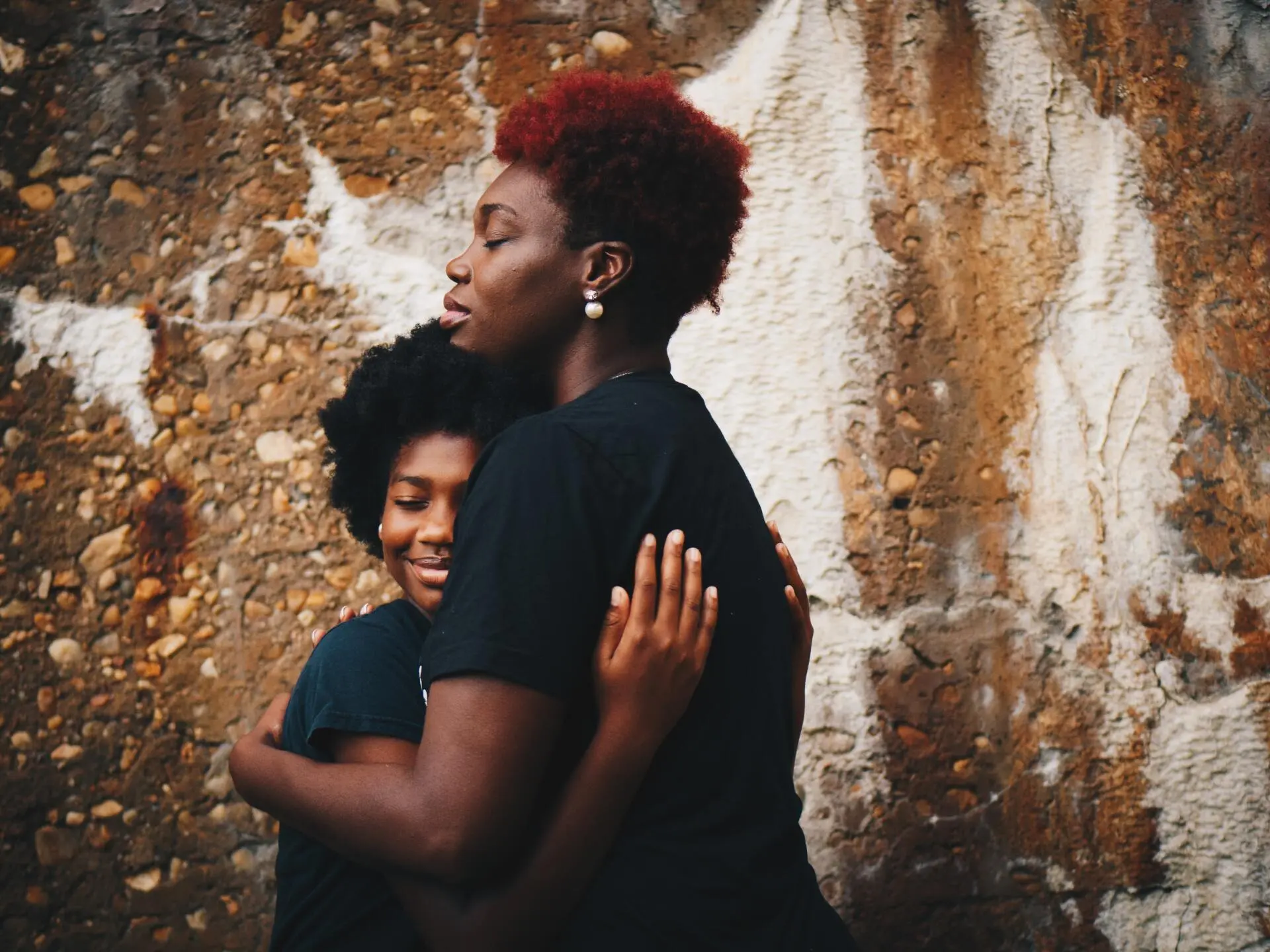How to Have an Empowered Parenting Conversation

Communication is the most important tool that we bring to effective parenting skills, especially if we are committed to parenting effectively without using punishments, consequences, and threats. It’s what replaces these more traditional parenting strategies that cause harm.
The thing is…not many of us are skilled communicators. Our parenting communication style is influenced early on by our primary caregivers. My mom was a practiced stonewaller. When she was upset, she shut down. Not because she was trying to hurt me, but because this was her defense mechanism. This made me hyper-vigilant in the way I communicated with everyone else in my life, as MY defense mechanism.
I share this to offer that we aren’t bad parents because we aren’t yet skilled communicators. Nor were our parents. Ineffective and dysfunctional communication is the norm!
So, before we dive into the Jai Empowered Communication model that our Parenting Coaches teach their clients, let’s identify some key aspects of ineffective/dysfunctional communication.
What Does Dysfunctional Communication
Look Like?
Dysfunctional communication shows in a variety of ways, but here are some common signs to look out for:
1. Lack of clarity: Messages may be vague or unclear, making it difficult for the receiver to understand what the sender is trying to say.
2. Misinterpretation: Communication may be misinterpreted, leading to confusion, misunderstandings, and conflicts because it’s being processed through the worldview, past experiences, fears, and mindset of the receiver.
3. Inconsistency: Messages may be inconsistent or contradictory, making it difficult for the receiver to know what to expect or how to respond.
4. Lack of trust: Communication may be dishonest or manipulative, leading to a breakdown in trust and a sense of betrayal.
5. Negative tone: Communication may be characterized by a negative tone, such as sarcasm, criticism, or aggression, which can make the receiver defensive and less likely to listen or respond positively.
6. Ignoring or dismissing: Communication may be dismissed or ignored, leading to a feeling of neglect or rejection.
7. Non-verbal cues: Non-verbal cues, such as facial expressions or body language, may contradict or undermine verbal communication, leading to confusion or mistrust.
Sound familiar?
The good news is that we can learn to be effective communicators, and our Empowered Communication model is a great place to start. This is a 10-step process that is based on the work of Dr. Marshall Rosenberg in his seminal work,
Non-Violent Communication. (Our students read this book as a part of their education to become Parenting Coaches. Highly recommend it!!)
Rosenberg defines violence as any act that causes physical, emotional, or relational harm. And we concur. So yes, so much of the communication that we experience in our lives is violent. It hurts. So it’s no wonder that we fail in our ability to be heard and to hear others, even the people we love the most!
By committing to learning to communicate using these 10 Steps, we allow our children the gift of knowing that communication is valuable, useful, and safe. We also have a reliable tool to support us as we navigate the difficult role we have as parents!
The 10 Steps Of An Empowered Conversation
Empowered parenting
believes that conversation matters. We believe that the success of a conversation comes from the quality of security within the connection to self, and between the people involved in the conversation.
Our 10-step communication process, Empowered Conversations, will unpack and highlight the essentials of non-violent communication. It’s a process to resolve conflict, repair disconnection, and solve problems creatively.
You can use this process in your own way. We showcase a process that you can pick and choose from, creating your own style of communicating. It will be based in:
- Self-security
- Expansive beliefs in your voice, feelings, and needs
- Ability to communicate to connect and understand
- Non-attachment to an outcome or agenda
- Spaciousness to actively listen vs. prove that you are right and know more
- Communication occurs after internal and external safety has been established
Step 1: Connect
Before a conversation begins, connect without an agenda. Enjoy spending time with your child, partner, or whoever you intend to speak with. If that’s not possible, spend time connecting to yourself before you begin the conversation.
Step 2: Consent
We are not forcing another person into a conversation. Successful communication happens when there is consent. We ask our children, partner, co-parent, or whoever we are intending to speak to if:
- Now is a good time?
- They are “up” for this conversation?
- They are willing to actively listen and possibly reflect back on what you’re saying.
Step 3: State Your Intention
You can do this out loud or in your head. Your intention is your “arrow” for the conversation. It will direct your energy and help you stay focused. If you find the conversation spreading out of context, you can bring the conversation back by reminding yourself or the other person of the intention.
Examples of intentions:
- I’d really like to talk about what happened today at breakfast. My intention is to understand your point of view.
- Thanks for being willing to chat. My intention is to apologize for how I reacted last night.
- I’d really love to focus on how to figure out a way to make our schedules work more smoothly.
- I am hoping you and I could focus on talking through why our mornings are so rough.
Step 4: Affirm What’s Going Well
Make a “slow entry” into your concern by focusing on what is going WELL in the relationship between you and your child, partner, co-parent, or parent.
Examples of affirmation:
- I’ve been having so much fun with you at the park this week.
- I’ve really loved the meals you’ve been cooking this week.
- I’m inspired by the artwork you’ve been creating lately.
- I’m thankful for your constant willingness to check-in.
- I'm thankful you're open to listening and speaking to me about this topic.
- I appreciate your willingness to work through this together.
Step 5: State Your Concern Clearly
Share your concern with your child or conversation partner. Do not embellish or over-dramatize. If possible, state as objectively as possible.
Examples of stating concern:
- I’m nervous about how late we’ve been leaving home in the morning. We’ve been late for school for four days this week.
- I’m concerned about the words you’ve been using with your sister.
- I’m ready to work out our struggle around dinner time.
- I’m concerned about the amount of time you’ve been on your phone. I noticed this week you’ve been up until past midnight every night.
Step 6: Take Responsibility For Your Part
Taking responsibility for your part means that you may apologize, or take accountability for your role in the situation.
Examples include:
- I apologize for not addressing this sooner. I dodged a direct conversation with you.
- I’m really sorry about how I responded to you in the car. That was not gentle.
- I’d like to apologize for how grumpy I’ve been this week.
- I acknowledge how I’ve been at work so much, and not able to be with you at bedtime. I see your sadness and I want to find ways to spend lots of time together.
Step 7: State Your Feelings And Needs
Clearly make a ‘feelings and needs' statement. Be sure to take responsibility for your feelings and needs and express them in a way that does not put any weight on the other person to fix your feelings or take care of your needs. Speak in an “I” statement. This may feel uncomfortable or unknown. Your child or partner may be used to blame, shame, and criticism, and you may find yourself stuck in a communication pattern of defense and shutting down. Be patient with this step. You can ask for consent first, to be sure that the person hearing you is ready.
Asking for consent to share your feelings:
- Would it be okay to share how I feel and what my need is? You don’t have to DO anything about it. I would feel supported just by being heard and witnessed.
Sharing your feelings and needs example:
- “I’m feeling really sad about how often we have been arguing. I am really longing for us to be communicating clearly and calmly.”
Step 8: Offer Empathy For The Other Person’s Feelings And Needs
After you have shared your feelings and needs using “I statements,” without putting ANY responsibility on the other person to fix your feelings, take care of them, or change how you feel, you then open a path to vulnerability.
You can invite your communication partner to show how they feel and what needs are coming up for them. You may notice that the eighth step is a little bit easier. This step is to offer empathy guesses or reflections of the other person’s feelings and needs.
Examples of offering empathy:
- I imagine you are feeling stressed, also, I remember how you do not like being late for school. Can you share more?
- Can you help me understand what feelings are coming up for you right now?
- Do you need support with screen-time boundaries? Maybe it’s too difficult to turn the screen off?
- Are you feeling overwhelmed right now?
Step 9: Make A Request, NOT A Demand
Making a request is clarifying how you both can move forward from this point. One sentence that works superbly well in making a request, is
“Would you be willing...?”
Then, arriving at a plan together will lay the groundwork for clear communication moving forward.
Remember, the other person does not have any responsibility for saying YES to your request. They get to say no. It is your responsibility to care for your disappointment if your communication partner says no to your request. Then, practice resiliency by continuing to negotiate a request that works for all.
Requests are:
- Specific, not general. Potential answers: who, what, when, where, and how long.
- Doable and positive, not discussing what you do not want.
- Not attached to the outcome; holding space for your request to find a different form to best serve everyone.
- Clear that the person is not being “hooked” by your request. They get to say no.
- An invitation for the communication partner to give an honest answer.
- NOT stuck on strategies.
Examples of connection requests:
- Would you be willing to repeat back what I’ve said so I know I’m communicating clearly?
- I’m so curious about how you feel right now. I would feel more at ease if you could share a couple of words about your experience right now.
Examples of action requests:
- I would feel so thankful if you would be willing to help me with the laundry on Saturday afternoons. You could put your clothes away, and I can do the rest.
- I am really hoping for more ease in our mornings. Would you be willing to wake up about 15 minutes earlier? We could set an alarm, and make a chart for you to follow so you know exactly what to do.
- I would be so excited by your help with the kids when I get home from work. Could you play with them while I cook dinner? It would be from 5:30-6, then we could all eat together.
- I’m hoping for your help in the mornings with breakfast. I’m thinking about you taking the kids outside while I cook, what do you think? Do you have another idea?
Demands:
- Are attached to one single outcome being what you, as the parent, want.
- Do not allow the other person to speak honestly. There is an unspoken agreement that “you better say yes to me or else...”
- Are attached to “because I said so.”
- Do not consider the bigger picture of the other person’s needs.
Examples of demands:
- I need you to pick up your room right now. It’s unacceptable for you to have your clothes all over your room. Now, or no iPad.
- You need to help me with dinner. I can’t do this all by myself. You need to step it up.
- I need you to listen. You never listen. You need to listen right now.
According to Dr. Vanessa Lapointe, the quickest way to make a child tune out is to say, ‘I need you to…’ Children aren't ‘wired’ to be concerned about our needs. We are in charge of meeting our own needs, not our children.
Step 10: Share Appreciation
Share appreciation for your communication partner’s willingness to speak with you. Even if you didn’t get what you wanted in your request, or if the conversation wasn’t perfect and needs another round or two to find conclusions, express appreciation regardless.
Examples of appreciation:
- Thank you for listening to me. I trust that we will work this out.
- I appreciate you.
- Thank you for your willingness to get creative with me.
- I love you. I love how well you hear me.
This is obviously a lot to take in and takes time to practice, try again when we falter, and ultimately shift from being a communication style we are learning to OUR communication style.
Rather than trying to shift everything, start with one thing. What’s ONE step that you can begin to practice in the way you speak to your kids?
IMPORTANT NOTE:
As Empowered Communicators, it’s important to have compassion for the people in our lives who don’t yet have these skills. When we see them through a lens of compassion we can stay rooted in our own values, without shifting into judgment, blame, or fixing another person.
The more we
MODEL
Empowered Communication, the more the people in our lives, especially our kids, will start to meet us in this new world of connection, personal responsibility, and solution-oriented relating.
For a deeper understanding of our Empowered Communication framework, register for our
FREE Peaceful Parenting Mini-Course. This 5-part series will support you to understand how you can build more effective parenting skills!
Meet Your Author, Kiva Schuler
Jai Founder and CEO
Kiva’s passion for parenting stemmed from her own childhood experiences of neglect and trauma. Like many of her generation, she had a front row seat to witnessing what she did not want for her own children. And in many ways, Jai is the fulfillment of a promise that she made to herself when she was 16 years old… that when she had children of her own, she would learn to parent them with compassion, consistency and communication.
Kiva is a serial entrepreneur, and has been the marketer behind many transformational brands. Passionate about bringing authenticity and integrity to marketing and sales, she’s a sought after mentor, speaker and coach.
Share This Article:
Curious for more?














